Metal 3D Printing's Key Advantages Over Conventional Fabrication
Metal 3D printing processes -- like metal fused filament fabrication (metal FFF) -- present a breakthrough way to make functional metal parts accessible for businesses of all sizes. The experts at Markforged explore metal FFF applications and the advantages of deploying it over conventional fabrication.
Metal FFF 3D printing is an expanding space with a wide range of solutions, capabilities, and maturities. The technology offers an accessible way for the modern manufacturer to print real metal parts with advantages not found with traditional fabrication.
Complex Geometries at No Cost
3D printers excel at creating complex geometries due to an automated slicing and printing process for additive part construction.
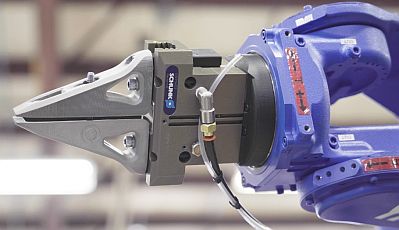
3D printing of everything from prototypes to end-use parts can be faster, cheaper and easier than subtractive manufacturing methods.
In subtractive machines, complexity and cost have an exponential relationship -- complex 2D geometries require a 2 or 3 axis CNC mill while 3D geometries require a 3 to 5 axis CNC mill. These machines are costly to program, operate, and maintain. Metal FFF printers overcome these challenges and can produce complex curves and geometries with ease.
Ultra-High Customizability
Metal FFF printers make it easy for users to dynamically alter designs to solve specific problems. Engineers, when dealing with conventional manufacturing, are often forced to pick between low cost, one size fits all solutions and ultra expensive one-offs.
Low Barrier to Functional Parts
Metal FFF printers bring the user closer to the means of production in several key ways.
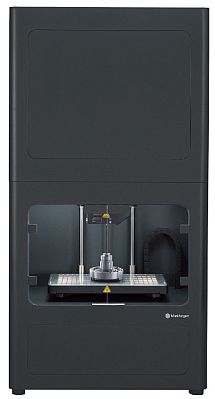
Markforged's Metal X offers an accessible end-to-end metal 3D printing solution designed to yield functional metal parts.
First, there is no need for CAM or drawings; users can go directly from CAD to the part with little preparation. Metal FFF printers can be housed in almost any environment and are affordable while conventional manufacturing usually requires acquisition of expensive machines or outsourcing of parts.
Fabricating Difficult-to-Machine Materials
Metal FFF can fabricate materials that are commonly too challenging to print or cost prohibitive to fabricate using conventional manufacturing. This process is faster and less expensive than machining from a block of wrought stock.
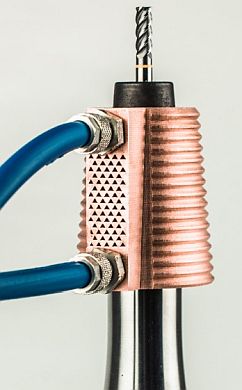
3D printing applications skew toward low volume, high customizability, and specialty materials.
- Tool Steels: Tool steels are difficult to machine to their high hardness; however, metal FFF can print near net shape parts. These parts are also ideal for some applications that require precise parts to be post-processed by machining.
- Inconel and Copper: Both materials are extremely difficult to machine. Inconel usually requires specialized machining equipment that brings high production costs. Copper is so challenging to fabricate that it is frequently substituted for aluminum in many non-conductive applications. Metal FFF 3D printing enables users to fabricate parts with these materials affordably and quickly in-house.
Impossible Geometries
Metal FFF 3D printing enables manufacturers to print geometries that are not achievable by conventional manufacturing practices. These new geometries can improve part performance or open up new capabilities.
VIDEO: Metal 3D Printing Walkthrough | Metal X
- Custom internal passageways and holes with long aspect ratios: Subtractively manufactured parts are constrained by where a cutting tool can reach. Metal FFF overcomes this challenge by printing complex features in place. Users can design cavities and through holes into the part that conform to features, enabling fluid cooling, air cooling or other applications. Additionally, long, thin holes can be easily printed -- where in conventional manufacturing cutting tools with extreme aspect ratios would be liable to break.
- Closed cell infill: Metal FFF printers print parts with closed cell infill by default. These printed parts have a higher strength to weight ratio than solid parts. Conventional parts must be lightweighted by removing additional material from the outside of parts, thus adding cost. Lightweighting is free.
Metal FFF Applications
The following metal FFF application examples, while not an exhaustive list, can serve as examples to help manufacturers gain an accurate understanding of what's advantageous to 3D print. Markforged recommends that manufacturers examine their own operation for similarities and opportunities to leverage advantages of metal FFF 3D printing.
Concept Models and Functional Validation
Metal FFF printers are an ideal R&D technology -- enabling users to quickly and efficiently check if their design intent meets functional requirements. Because metal FFF is fast and light on logistics, parts can be quickly printed and avoid long lead times common with conventional fabrication.
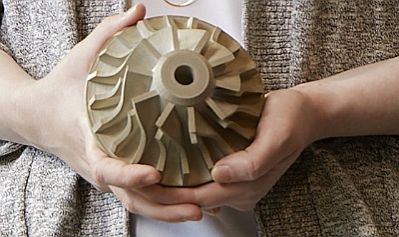
Custom 3D Printed Impeller
Within this space, prototypes are the most common application. They come in many shapes and sizes, but typically are most valuable when there is a need for a metal prototype for a metal part. Metal prototypes are required when the properties required in the prototype cannot be matched by composite parts.
While many parts can be prototyped by metal FFF, the type of parts that have the highest ROI are ones that are economically inefficient to produce at low volume or are impacted by long lead times.
- Bespoke Parts: Low volume parts like custom impellers and nozzles can be prototyped and produced on a metal FFF 3D printer. The complex geometries required and the low volume nature of these parts fall under this application.
- Cast Parts: Die casting is a cost effective way to make complex parts at high volume. However, these parts are also extremely expensive to prototype. Metal FFF enables users to print near net shape parts to refine cast part design before committing to production tooling cost.
- Custom CNC Parts: Metal 3D printing provides a less costly and faster method than procuring parts from third party CNC manufacturers and can materially augment internal fabrication bandwidth. CNC prototypes that are most impactful to print are typically complex and require more machining operations.
Workholding/Alignment Tools
Like prototyping, workholding and alignment are common CFR (Continuous Fiber Reinforcement) printing applications. Metal FFF adds a new dimension to the existing composites applications space, thus opening up new opportunities.
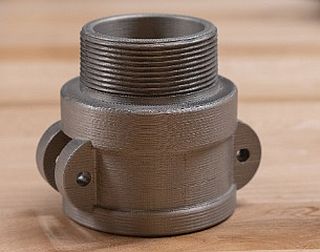
Cast Part Prototype
Composite tooling is transformational but has its weaknesses. In these areas, metal FFF parts shine. Metal is both heat and wear resistant where composites are not. Manufacturers can also utilize the inherent performance advantages of metal 3D printing, which include lightweighting, cooling channels, etc. -- to build tools that perform better than the conventional alternative.
Hybrid Tools
3D printed metal and composite parts can be combined into hybrid tools.
These tools enable users to harness the inherent strengths of each technology. This includes instances particularly where localized wear resistance is required; for example, users can print metal tips and plastic bodies.
High-Wear End of Arm Tooling (EOAT)
EOAT, which is a common composite application, has additional specific metal applications. Examples include:
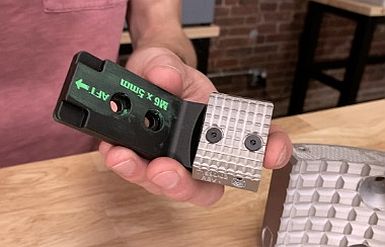
Hybrid End of Arm Tooling
- High wear surfaces where metal tools far outlast composite tooling.
- Tools that operate in heated environments and can work with hot components. Some EOAT is used in high temperature locations where only metal can reasonably operate.
- Smaller and more intricate EOAT that are too small or intricate for Continuous Fiber Reinforcement (CFR).
Brazing Fixtures
Brazing fixtures need to be strong in high temperatures. 3D printing meets those requirements and adds a level of customizability. Metal parts can also work in the extreme heat conditions of furnaces. Complex features and difficult-to-machine materials make conventional manufacturing expensive.
High-Wear Workholding (stanchions, cradles, etc)
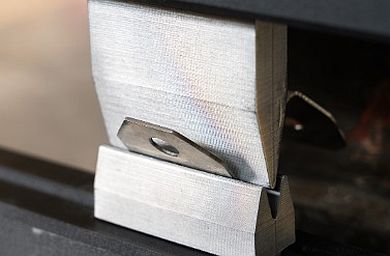
Bending Die
Line tools like stanchions and cradles are subject to repeated abrasion and wear. Metal 3D printing provides an easy way to make customized tools with hardened, wear-resistant metals.
Forming, Cutting, and Bonding
Plastic and composite tools can have limited applications -- such as forming dies. Utilizing the inherent hardness and strength of the material, metal forming and cutting tools can make highly customized geometries. Metal 3D printing provides a series of compelling applications in forming, cutting and bonding.
Punch Dies and Stamp Dies
Metal 3D printing can fabricate custom tool steel punch and stamp dies. Printed parts need to be hardened and post-machined for precision. Complex tools can be economically advantageous for metal FFF.
Cutting Tools
Metal 3D printing can be leveraged to create highly customized cutting tools.
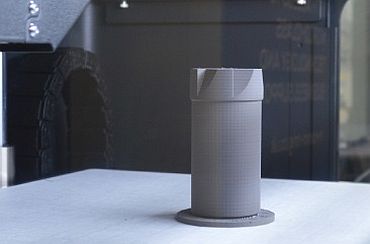
Cutting Tools
These specialized tools can include custom internal channels for cooling fluids or intricate geometries, which are not attainable with conventional fabrication methods. Carbide tips can be brazed onto 3D printed tool steel tool bodies, giving them a repeatable and reliable cutting surface. Other examples include custom CNC cutters or other traditional cutting tools.
Weld Shanks and Induction Coils
This application is specific to copper parts.
Weld shanks and induction coils both use conductive properties coupled with geometric flexibility to provide unique solutions in their spaces. Custom geometries for these applications can be designed and printed; for example, weld shanks can be designed with internal cooling channels for a higher performance tool or to perform spot welding on a unique geometry.
For induction coils, metal 3D printing enables precise and uniform heating for specialized parts. Due to the difficulty of machining copper, metal 3D printing offers an economical way to make these copper parts.
Low Volume Custom Parts
While many production parts are mass produced, a subset of end parts are fabricated in low volumes. 3D printing production applications skew toward low volume, high customizability, and specialty materials -- all of which are significant per-part cost drivers.
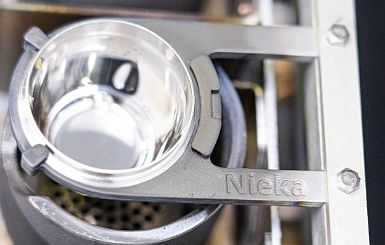
Custom Inconel Part
Like copper, Inconel carries massive fabrication costs. For low volume Inconel parts, metal 3D printing can be the most cost competitive and fast solution.
Maintenance Tools/Fixtures
Metal brings hardness and wear resistance that composite 3D printing cannot. Maintenance tools, created by metal 3D printing, can also be highly customized for difficult field tasks.
Custom Hand Tools & Inserts
Printing hybrid tools with composite tool bodies and metal wear surfaces can enable manufacturers to quickly make a durable, functional tool, for a wide variety of applications. In addition, users can interchange tool bodies and inserts, making a single tool usable in a wide variety of situations.
Replacement Parts
Metal 3D printing represents a compelling way to fabricate replacement parts that are difficult or even impossible to procure. Cast part replacements can leverage metal 3D printing's complexity and near net shape precision.
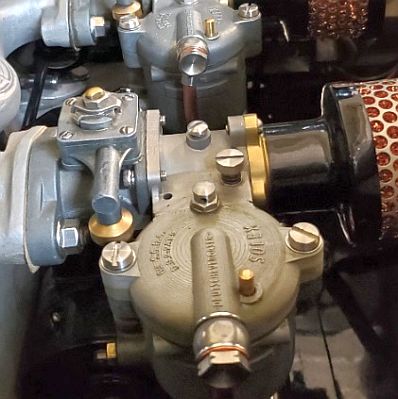
Casting replacement parts is especially useful in the automotive industry.
Casting replacement parts conventionally is infeasible due to high tooling costs. Metal 3D printing offers a no-tooling alternative. Applications work well in the automotive space (car restoration) but easily translate to other industries where bespoke replacement parts are required.
Want more information? Click below.
Rate this article
View our terms of use and privacy policy ::m::